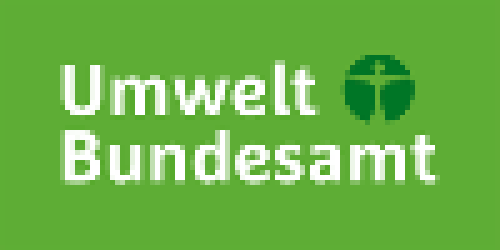meta data for this page
Differences
This shows you the differences between two versions of the page.
| sector:agriculture:agricultural_soils:3df_agriculture_other [2021/12/23 10:49] – [Trend discussion for Key Sources] doering | sector:agriculture:agricultural_soils:3df_agriculture_other [2024/11/06 14:47] (current) – external edit 127.0.0.1 | ||
|---|---|---|---|
| Line 8: | Line 8: | ||
| Hexachlorobenzene (HCB) is one of the listed persistent organic pollutants covered by the Aarhus Protocol on Persistent Organic Pollutants from 2009, Annex III((Aarhus Protocol on Persistent Organic Pollutants (2009), United Nation: Aarhus Protocol on Long-range Transboundary Air Pollution, Persistent Organic Pollutants, 1998 - Amendment - (on Annexes V and VII) Decision 2009. Status In force (since Dec 13, 2010), Annex III.)), the Stockholm Convention((Stockholm Convention (2001): The Stockholm Convention on Persistent Organic Pollutants, opened for signature May 23, 2001, UN Doc. UNEP/ | Hexachlorobenzene (HCB) is one of the listed persistent organic pollutants covered by the Aarhus Protocol on Persistent Organic Pollutants from 2009, Annex III((Aarhus Protocol on Persistent Organic Pollutants (2009), United Nation: Aarhus Protocol on Long-range Transboundary Air Pollution, Persistent Organic Pollutants, 1998 - Amendment - (on Annexes V and VII) Decision 2009. Status In force (since Dec 13, 2010), Annex III.)), the Stockholm Convention((Stockholm Convention (2001): The Stockholm Convention on Persistent Organic Pollutants, opened for signature May 23, 2001, UN Doc. UNEP/ | ||
| - | In Germany the application of HCB as a pesticide, in a pure form, has been prohibited since 1977 and thus no HCB emissions were reported | + | In Germany the application of HCB as a pesticide, in a pure form, has been prohibited since 1977 and thus no HCB emissions were reported |
| Lindane (gamma-hexachlorocyclohexane, | Lindane (gamma-hexachlorocyclohexane, | ||
| Line 124: | Line 124: | ||
| - | Before 2006 there was no legal regulation in Germany on the maximum content of HCB in the active | + | Before 2006 there was no legal regulation in Germany on the maximum content of HCB in the active |
| Thus, a maximum HCB concentration of 300 mg/kg (IPCS, 1996 ((IPCS (1996), Chlorothalonil. Environmental Health Criteria, 183. 145pp. WHO, Geneva, Switzerland. ISBN 92-4-157183-7. C12138614.7.))) is considered for the years 1990 until 1999 for Germany. | Thus, a maximum HCB concentration of 300 mg/kg (IPCS, 1996 ((IPCS (1996), Chlorothalonil. Environmental Health Criteria, 183. 145pp. WHO, Geneva, Switzerland. ISBN 92-4-157183-7. C12138614.7.))) is considered for the years 1990 until 1999 for Germany. | ||
| Line 142: | Line 142: | ||
| - | The data on lindane sales were compared by the BVL with historical data from the GDR statistics and published since 2020 (see Table II). For the years after 1997 no data are available because the application of lindane was phased out in 1998. | + | The data on lindane sales were compared by the BVL with historical data from the former |
| Line 190: | Line 190: | ||
| Recalculations were made for the complete time series due to the changes and new information given by the BVL for the amount of domestic sales of the active substances. The following Tables IV a) - c) show the differences between the data for submission 2021 and the current data and are given in tonnes per year and in percentage. | Recalculations were made for the complete time series due to the changes and new information given by the BVL for the amount of domestic sales of the active substances. The following Tables IV a) - c) show the differences between the data for submission 2021 and the current data and are given in tonnes per year and in percentage. | ||
| - | //Tables IV a) - c): Recalculation of the activity data: lindane, | + | //Tables IV a) - c): Recalculation of the activity data: lindane, |
| a) | a) | ||
| Line 201: | Line 201: | ||
| b) | b) | ||
| ^ Active Substance | ^ Active Substance | ||
| - | | Chlorthalonil_SUB | + | | Chlorothalonil_SUB |
| - | | Chlorthalonil_SUB | + | | Chlorothalonil_SUB |
| | Difference | | Difference | ||
| | Difference | | Difference | ||
| Line 218: | Line 218: | ||
| - | ^ Emissions | + | ^ Emissions |
| - | | HCB_SUB 2022 | + | | HCB_SUB 2022 | kg | 107.2 | 138.1 | 55.7 | 29.7 | 26.7 | 18 | 26.6 | 24.2 | 5.0 | 45.0 | |
| - | | HCB_SUB 2021 | + | | HCB_SUB 2021 | kg | 107.1 | 138 | 55.7 | 29.7 | 26.7 | 18 | 26.6 | 24.2 | 5.0 | 45.0 | |
| - | | Difference | + | | Difference |
| - | | Difference | + | | Difference |
| ^ Emissions | ^ Emissions | ||
| Line 229: | Line 229: | ||
| | Difference | | Difference | ||
| | Difference | | Difference | ||
| - | | Difference | ||
| ^ Emissions | ^ Emissions | ||
| Line 246: | Line 245: | ||
| ===== Planned improvements ===== | ===== Planned improvements ===== | ||
| - | + | According to the BVL, no maximum permitted HCB concentrations have ever been legally established for the technical active substances atrazine, simazine, lindane and clopyralid, nor are such limits in place today. Further information on the sales volumes of atrazine, simazine and cloparylide is now available but not included in the current submission. The method will be reviewed accordingly, | |
| - | + | ||
| - | No improvements | + | |

